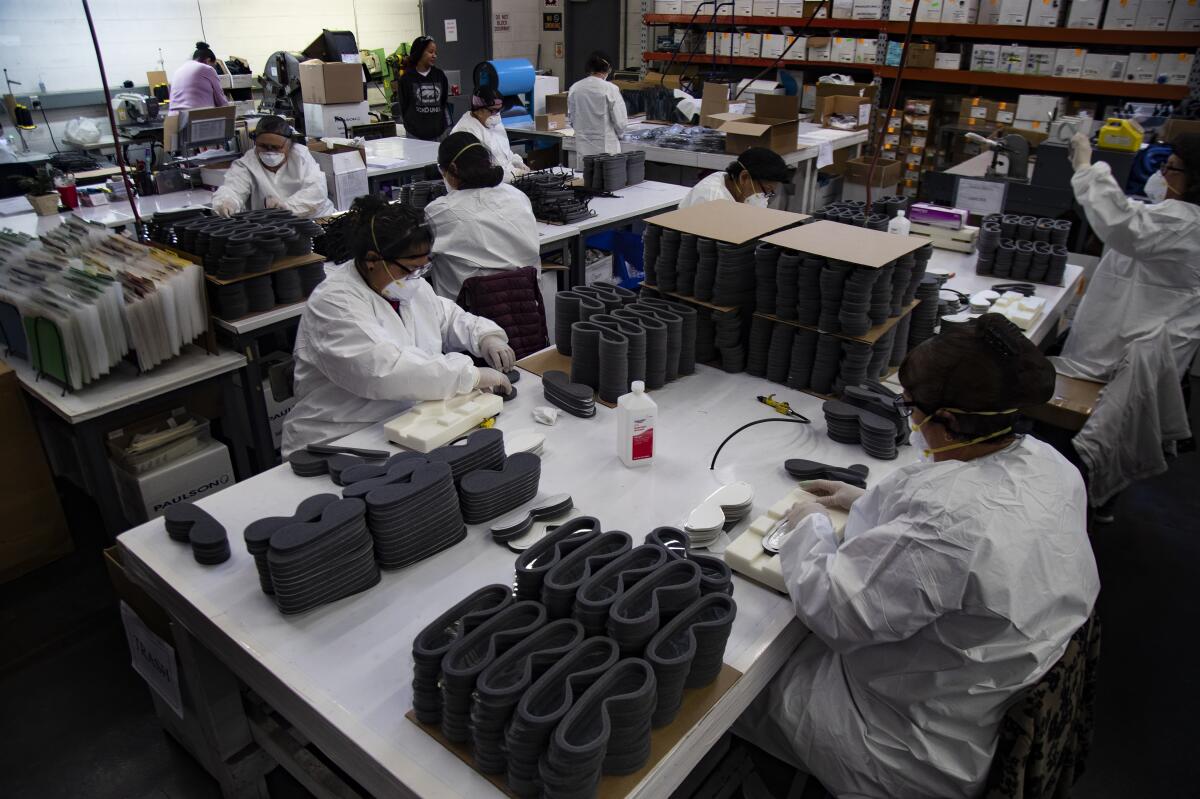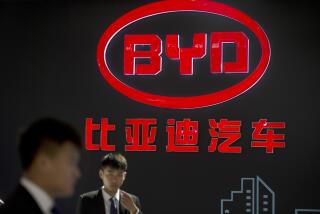As coronavirus cripples global supply lines, more U.S. firms looking to leave China

WASHINGTON — Beyond short-term economic disruptions and increased recession worries, the spreading coronavirus is sowing the seeds of a broad transformation of the global supply chains that for years brought low consumer prices and high corporate profits on products such as cellphones, computers and household goods.
China looks to be the biggest loser as U.S. producers step up plans to reduce their reliance on the world’s second-biggest economy, which has long enjoyed a central, dominant role in an international manufacturing network that ships parts and materials back and forth among different countries before assembling them into finished products.
A slow U.S. exodus from China was already underway because of soaring wages in China and President Trump’s trade and tech wars, with companies such as Apple announcing plans last year to diversify its manufacturing, which was heavily reliant on China. Trump’s punitive tariffs on Chinese imports and the increasingly broad bipartisan support in the U.S. to get tough with Beijing have added to the cost and political pressure for companies operating in China.
“If any company was thinking of moving, they’re now really exploring it or working on an executed plan,” said Ethan Harris, global economist at Bank of America Merrill Lynch.
For many American companies, the coronavirus crisis has highlighted the downside of their dependency on China.
Supply lines have been crippled by quarantines, factory closings, travel restrictions and other stringent measures taken by China and other countries to contain the outbreak. Some companies that previously relocated parts of their operations to Vietnam and elsewhere have been able to offset some of their lost production capacity. But the sharp decline in China’s globally leading manufacturing economy has had widespread knock-on effects.
Apple, Microsoft and Procter & Gamble are among many corporations that have warned of weaker-than-expected profits because of their exposure to China. Worries about prolonged supply disruptions were partly behind last week’s stock market meltdown.
P&G, for example, said it has 387 suppliers in China that ship 9,000 materials globally, affecting about 17,600 finished products.
A recent BofA survey showed just how wide the remapping of supply chains may be. Analysts who cover 3,000 firms reported that companies in 10 out of 12 global industries, including semiconductors, autos and medical equipment, have shifted, or plan to shift, at least part of their supply chains from current locations.
China is almost certain to take the biggest hit because of its outsized role. South Asia and Mexico may have the most to gain.
“These movements are tectonic,” Harris said.
Bhawnesh Mathur, chief executive of Masterwork Electronics, is starting to look more at Mexico. The Chula Vista company already has a plant in Mexicali, as well as one in Sonoma County, Calif. Those two facilities make printed circuit boards and other electronics assemblies for various manufacturers, using relays, connectors and many other components imported from China.
Masterwork contracts with about 100 factories in China. Before the virus outbreak, the company could place an order and have it confirmed in two to four days. Last month, Mathur said, it was taking two to three weeks — and even then, they couldn’t say when the products would be shipped.
Mathur had been thinking about reconfiguring his supply chain: He was feeling the heat from the Trump administration’s 25% tariffs on many machinery parts from China, as well as the rising political tide in America to bring industrial production of things such as electronic circuit boards closer to home.
Now with the coronavirus, he said, “there will be changes.”
China hawks in the Trump administration couldn’t be happier. Some of them have been blunt in saying that the coronavirus provides an opportunity for a U.S. decoupling from China.
Trump has sent more mixed messages about U.S. business relations with China, but he also has echoed remarks that drug makers should diversify and overhaul supply chains, which today rely heavily on Chinese pharmaceutical ingredients.
“A lot of the coronavirus shows the importance of bringing manufacturing back to America so that we are producing at home, the medicines and equipment and everything else that we need to protect the public’s health,” Trump said Monday at a White House meeting with drug company executives.
But few predict a manufacturing renaissance is on the horizon for America. Nor is a mass retreat from China likely to be swift. It took decades to build the current industrial ecosystem, and China’s huge labor force and superior infrastructure will be hard to replace or re-create anytime soon, if ever.
Still, there have been growing worries that supply chains were too concentrated or getting stretched thin.
Over the years, automation helped companies manage inventories so they have just enough materials and parts on hand to meet immediate needs, with goods arriving just in time. That freed up cash for other uses. But this innovation also made the system more vulnerable.
In 2011, a powerful earthquake and tsunami in Japan struck a large swath of the country’s eastern coastland, temporarily closing key producers of sensors and other electronic parts for the auto industry. The effect was that car assembly operations as far away as Louisiana had to cut production.
Since then, some Japanese producers have added backup facilities in other countries. Overall, however, the situation has only “marginally improved,” said Joel Scheiman, a veteran analyst for MF Global Holdings in Tokyo.
With Japan, South Korea and Italy now dealing with rising caseloads of the disease, there could be more and longer disruptions to global supply lines. China does a lot of manufacturing for Japan and South Korea, but Chinese factories also depend on them for parts.
In recent days China has largely reopened for business, although employees remain wary of returning. Companies in hard-hit Hubei province — epicenter of the novel coronavirus outbreak — are set to resume operations March 10.
U.S. manufacturers including Nike and Ashley Furniture have reduced their exposure to China, mostly by turning to Vietnam and others in Southeast Asia. Reliance on China, however, remains very high for a host of consumer products, including electronics.
Many of the world’s cellphones, for example, come from China, even though the coding and communication chips that make them “smart” are actually produced in the United States and other advanced economies.
Other components that go into Apple iPhones originate in still other countries. Apple relies on plants in China for parts as well as for the final assembly of much of its products sold worldwide.
When the coronavirus spread through China, Apple told investors that it wasn’t going to meet its revenue projections in the current quarter. The company said its contract factories weren’t resuming production as quickly as it had expected.
Apple’s chief executive, Tim Cook, has suggested that the company’s supply chain didn’t need a major overhaul, but it has taken baby steps to diversify and depend less on China.
And in the wake of the outbreak, Commerce Secretary Wilbur Ross has singled out Apple’s China-centric production system as illustrative of what’s wrong with today’s globalized economy.
“Globalization had gotten out of control. It takes 200 suppliers in 43 countries on six continents to make an iPhone,” Ross said in a speech last month in England.
In fact, more than half of all chips of all types produced in the world are sent to China, said Chris Richard, a partner at Deloitte Consulting in Phoenix.
As Richard sees it, industries will probably accelerate moves to localize supply chains so they’re more closely tied to final markets as opposed to extending them farther out.
The coronavirus fallout, he said, “is another proof in point that if you concentrate too much, you’re exposing yourself.”
More to Read
Get the L.A. Times Politics newsletter
Deeply reported insights into legislation, politics and policy from Sacramento, Washington and beyond. In your inbox three times per week.
You may occasionally receive promotional content from the Los Angeles Times.











